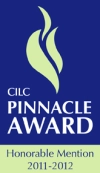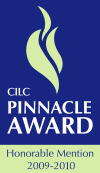A few months ago I did a short video on Literacy and Essential Skills. Human Resources and Skills Development Canada (HRSDC) outlines 9 literacy and essential skills:
- Reading text
- Document use
- Numeracy
- Writing
- Oral communication
- Working with others
- Continuous learning
- Thinking Skills
- Computer use
Yesterday I was reminded that a person can have high function in some areas of literacy, but not all of them. I saw an excellent, though sad, example of a young man lacking skills in basic document use. I was at the post office, in line behind a young man who was maybe 19 or 20. Decked out in Pumas, and other high-end brand name clothing, he sported the latest in cell phones. He spent most of his time in line on the phone.
He arrived at the counter with a sheaf of papers in his hand. They had the look of some standard government forms. The conversation with the clerk went like this:
Customer: “I need to mail these.” Clearly, he was a native speaker of English.
Clerk: “OK. Do you have an envelope?”
Customer: “No. Do you sell them?”
Clerk: “Yes, we have pre-stamped envelopes.” She went to the drawer and pulled out an envelope.
Customer: “Um… What do I do with it?”
Clerk: “You have to put the papers in the envelope. You fold them. See, like this…” She showed him how to fold the papers.
He pu t them in the envelope and then handed it to her saying, “I don’t know what to do with it.”
t them in the envelope and then handed it to her saying, “I don’t know what to do with it.”
She said, “You have to write your name and address up here,” she said, pointing to the upper left hand corner of the envelope. “Then you have to write the name and address of the person you’re sending it to here,” pointing to the middle of the envelope.
“Oh…OK,” he said, with his air of coolness, giving way to awkwardness, tinted by shame.
He did exactly as she told him, writing his own name and address in a single line across the top of the envelope.
He then took the papers out of the envelope and copied the addressee’s name and address in the middle of the envelope, until he ran out of space, and then he looked at her.
“Finish writing the address below where you started. Write the rest on a new line,” she said gently.
He did that and handed her the envelope again. She said, “You have to lick the flap on the back where the glue is and seal it shut.”
He did that, too and then looked at her questioningly as if to say, “Are we done, yet?”
She just smiled and told him how much it would cost. He whipped out his wallet, showing off a sheaf of bills.
Literacy isn’t about how much money you have, what kind of clothes you sport or what kind of gadgets you carry. Literacy is about having basic, yet essential skills, that allow you to do everyday things such as mail a letter.
____________________
Like this post? Share or Tweet it: Myth: Only poor people lack literacy skills http://wp.me/pNAh3-cE
Update – January 2018 – This blog has had over 1.8 million views thanks to readers like you. If you enjoyed this post, please “like” it or share it on social media. Thanks!
Sarah Elaine Eaton is a faculty member in the Werklund School of Education, University of Calgary, Canada.



 Posted by Sarah Elaine Eaton, Ph.D.
Posted by Sarah Elaine Eaton, Ph.D. 





You must be logged in to post a comment.